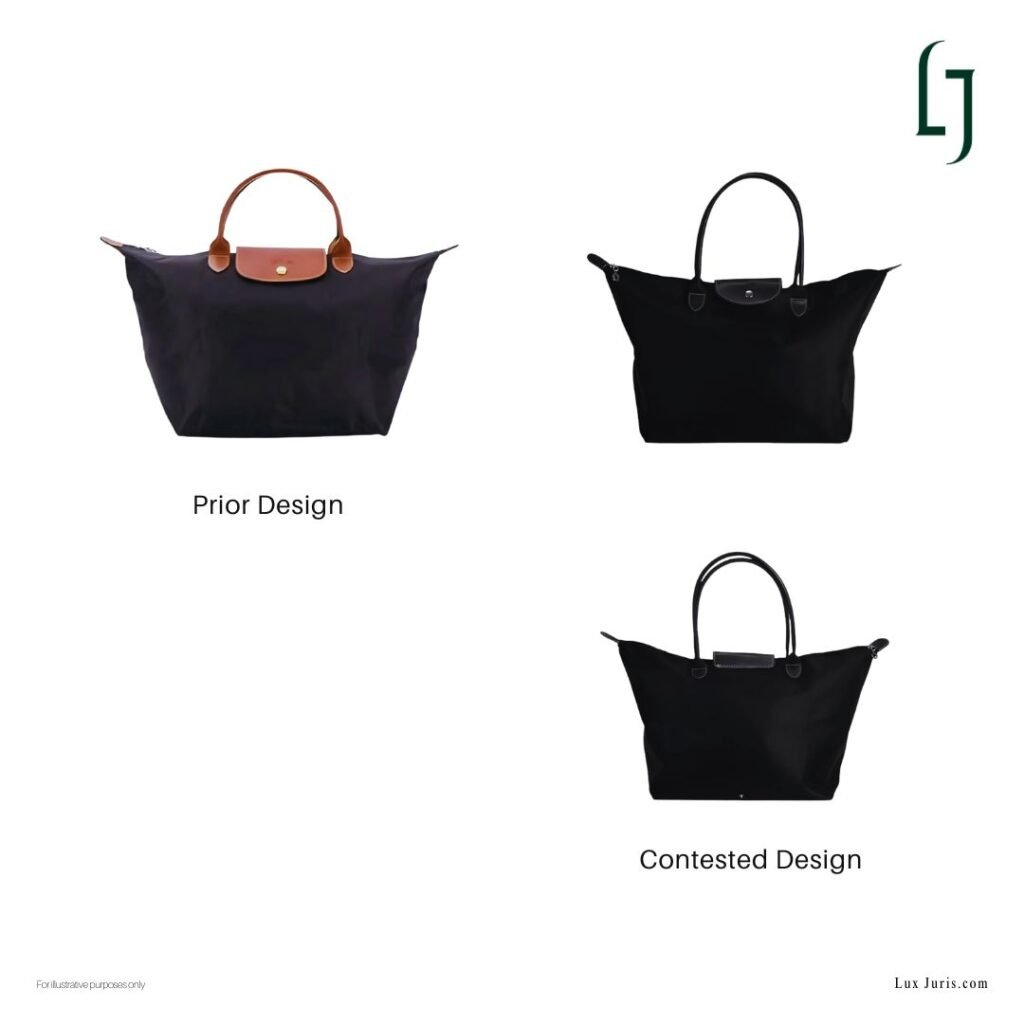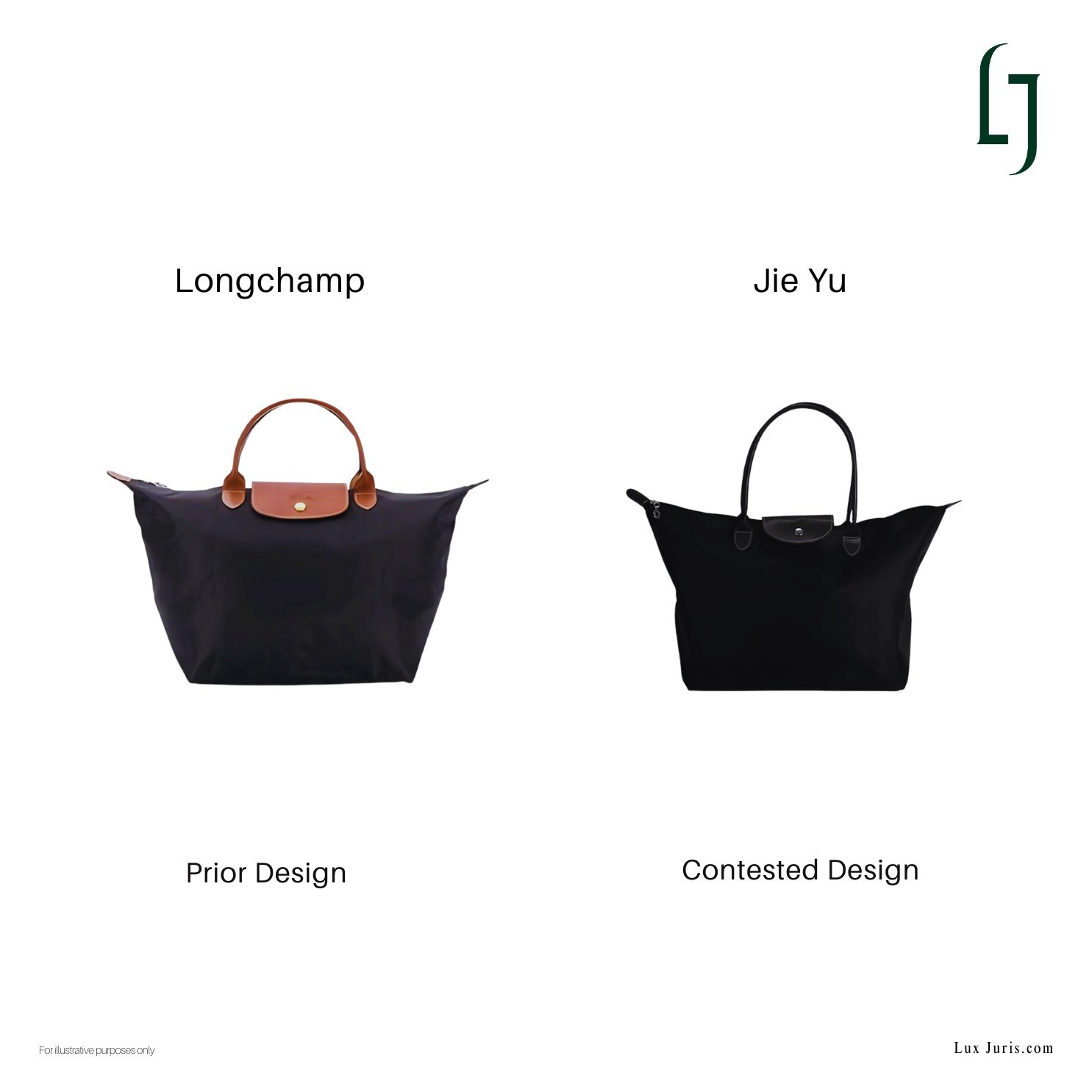EUIPO Invalidates Rival Design for Lack of Individual Character
The EUIPO’s Invalidity Division upheld Longchamp’s challenge to a registered handbag design, finding that it lacked individual character under Article 6(1)(b) of the Community Design Regulation. In its July 2025 decision, the Division concluded that the contested design was too close to an earlier version already made public. The outcome applies a basic rule of EU design law: where the overall impression remains the same, protection cannot be granted.
Evidence of Prior Design Disclosure
Longchamp submitted that the contested design was nearly identical to one already disclosed. It provided a published article from The Standard, dated 25 July 2023, which featured photographs of the earlier bag. The Division accepted this as valid evidence of disclosure.

Striking Visual Identity Overrides Minor Differences
The Office identified several points of similarity between the designs: a trapezoidal shape, pointed oval tabs, shield-shaped stitching, a central flap with rounded corners, a circular clasp, and a full-length zip closure. The proportions were also comparable. Variations in the colour and length of the handles were noted, but considered too small to affect the overall impression on the informed user. The Division concluded that “the contested design does not differ from that conveyed by the prior design.” As a result, the design was found to lack individual character.
The Longchamp Tote as Part of Everyday Cultural Life
Outside the legal context, the design is widely recognised by French consumers. The Longchamp tote has been a common accessory for years, particularly among secondary school students. Its form has remained consistent, contributing to its familiarity. Although this played no formal role in the decision, public awareness of the design may have supported the comparison.
Design Freedom and Its Creative Limits
The Division acknowledged that some elements of handbag design are shaped by function, such as the need for closure or portability. However, it stated that designers still have freedom to develop a product’s appearance. When the result is too close to an existing design, protection cannot be granted.
Non Response Seals Outcome
The holder of the contested design did not respond during the proceedings. Because of this, the Office did not examine the separate ground under Article 5 EUDR (novelty). The outcome was based entirely on the finding that the design lacked individual character.
Originality Remains a Condition for Protection
Under EU design law, protection depends on whether a design creates a different overall impression from earlier disclosures. Where a new design copies essential features of an existing one, small differences in detail are not enough. In this case, the contested registration was removed from the register. Longchamp succeeded in showing that the application was too close to its earlier design to qualify for protection.
Source:
